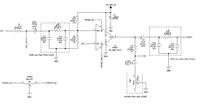vikash23
Full Member level 2

Hi,
I need to use a supply voltage of 12V to 24V to opamp. TL071 maxiumum supply voltage is +/- 18V. I wont be using the negative voltage , in that case will this op-amp can able to cope up with 24V input ?
Will I be able to use NE5534 ? but the maximum input voltage is +/- 22V?
I need to use a supply voltage of 12V to 24V to opamp. TL071 maxiumum supply voltage is +/- 18V. I wont be using the negative voltage , in that case will this op-amp can able to cope up with 24V input ?
Will I be able to use NE5534 ? but the maximum input voltage is +/- 22V?




